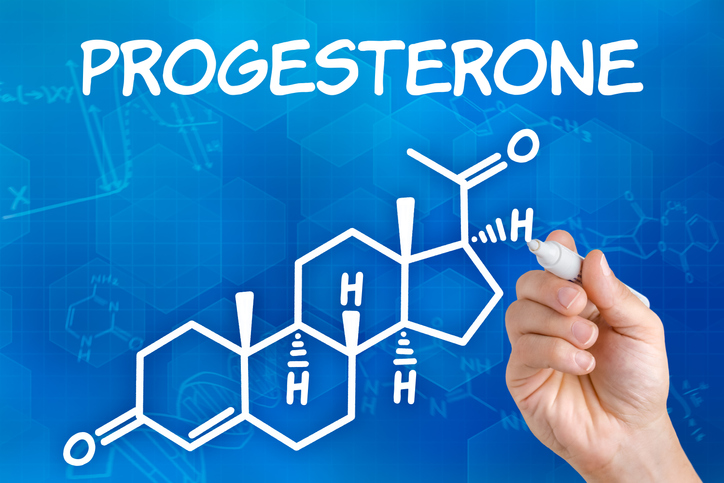Guide to Using Progesterone for Women’s Health
Lara Briden is a naturopathic doctor, women’s health activist, and bestselling author. Read more about her views on the benefits of progesterone.

Bioidentical hormones are recommended worldwide and Naturopathic Doctor Lara Briden is one of its keenest advocates for women’s health.
This is what she shared about their benefits in her blog.
As I describe on this blog and in my books Period Repair Manual and Hormone Repair Manual, bioidentical progesterone is a viable treatment for women’s health conditions such as PCOS, PMDD, migraines, endometriosis, adenomyosis, and perimenopause.
Here’s what you need to know.
First, this post is about real progesterone—not progestins such as norethisterone, levonorgestrel, and drospirenone.
Progestins are sometimes referred to as progesterone, but they shouldn’t be because progestins are not progesterone and have their own set of drug side effects.
For example, levonorgestrel is quite testosterone-like and so can cause androgen side effects such as weight gain. If you’re not sure if you’ve been prescribed progesterone or a progestin, read the ingredient label.
Second, progesterone might be worth trying, even if you have “progesterone sensitivity.” It’s all about the dose.
Third, understand that your doctor may, unfortunately, be reluctant to prescribe real progesterone because it is currently approved only for menopausal hormone therapy and not for conditions such as heavy bleeding, endometriosis, or adenomyosis. Yet, the consensus from gynecologists to whom I’ve spoken is that progesterone can be used for those conditions, with a few caveats:
– real progesterone is gentler than a progestin so needs to be used at a higher dose to have the same period-lightening effect
– real progesterone may not be strong enough for certain conditions, such as endometrial hyperplasia
– real progesterone is more expensive than a progestin
Conditions that benefit from progesterone
Menopause (either progesterone-alone or with estrogen as part of menopause therapy). Progesterone can be helpful even if you’re sensitive to progesterone and even if you don’t have a uterus.
Your doctor may think that progesterone’s only job is to protect the uterus, but it has many other benefits, including promoting sleep, strengthening bones, and protecting the breasts.
Progesterone-alone has a few advantages over estrogen: 1) it’s better for sleep and migraines, 2) it’s safer for breasts, and 3) it’s easier to stop because it’s not addictive like estrogen.
If you would like to try progesterone-alone for menopause, try saying:
“According to Canadian endocrinology professor Jerilynn Prior, micronized progesterone alone can relieve menopausal symptoms.”
Perimenopause as described in my new book Hormone Repair Manual and my blog post Rescue prescription for perimenopause.
“According to Canadian endocrinology professor Jerilynn Prior, micronized progesterone can be helpful for perimenopausal symptoms.” Oral micronized progesterone found beneficial for perimenopausal hot flushes/flashes and night sweats.
Heavy bleeding as described in my books and blog post How to treat heavy periods with diet and natural progesterone.
Micronised progesterone can help with heavy flow in a woman who already has anemia or who is in Very Early Perimenopause with regular cycles or in the Early Menopause Transition Phase with irregular cycles plus typical perimenopause experiences such as night sweats, new sleep problems, and increased premenstrual concerns.
Endometriosis and adenomyosis as described in my books, particularly Hannah’s endometriosis patient story in Period Repair Manual and Francine’s adenomyosis patient story in Hormone Repair Manual.
Progesterone helps to suppress the growth of endometrial tissue and regulate the immune system—therefore, potentially also addressing the immune dysfunction that lies at the heart of both conditions.
Migraines as described in my new book and blog post Natural treatment of menstrual or hormonal migraines.
It works by reducing histamine and glutamate and calming the brain. Progesterone capsules are usually the best treatment, but progesterone cream is also an option.
Perimenopausal and premenstrual mood symptoms (PMDD) as described in my new book and my PMDD-progesterone blog post. See also my blog posts about PMDD and histamine, PMDD and prolactin, and PMDD and iodine.
PCOS as described in my new peer-reviewed paper and Professor Prior’s protocol for cyclic progesterone therapy.
Progesterone works by lowering androgens and helping to restore ovulation.
Summary
Of course, progesterone is only one aspect of treatment. It works best when combined with other treatments such as magnesium for migraines, inositol for PCOS, and immune treatment for endometriosis.
Helpful information:
The micronised progesterone as indicated here is the most effective way to absorb this hormone.
The bioidentical progesterone in both Serenity and 20 to 1 is micronised which not only is more effective, but in a cream formula means dosage is much easier to vary than with pill or suppository forms.
If you are not sure if you need progesterone alone, or a small amount of bioidentical oestrogen as well, then this article will be helpful.
https://anna.blog.wellsprings-health.com/which-hormone-or-hormones-might-you-need/


















